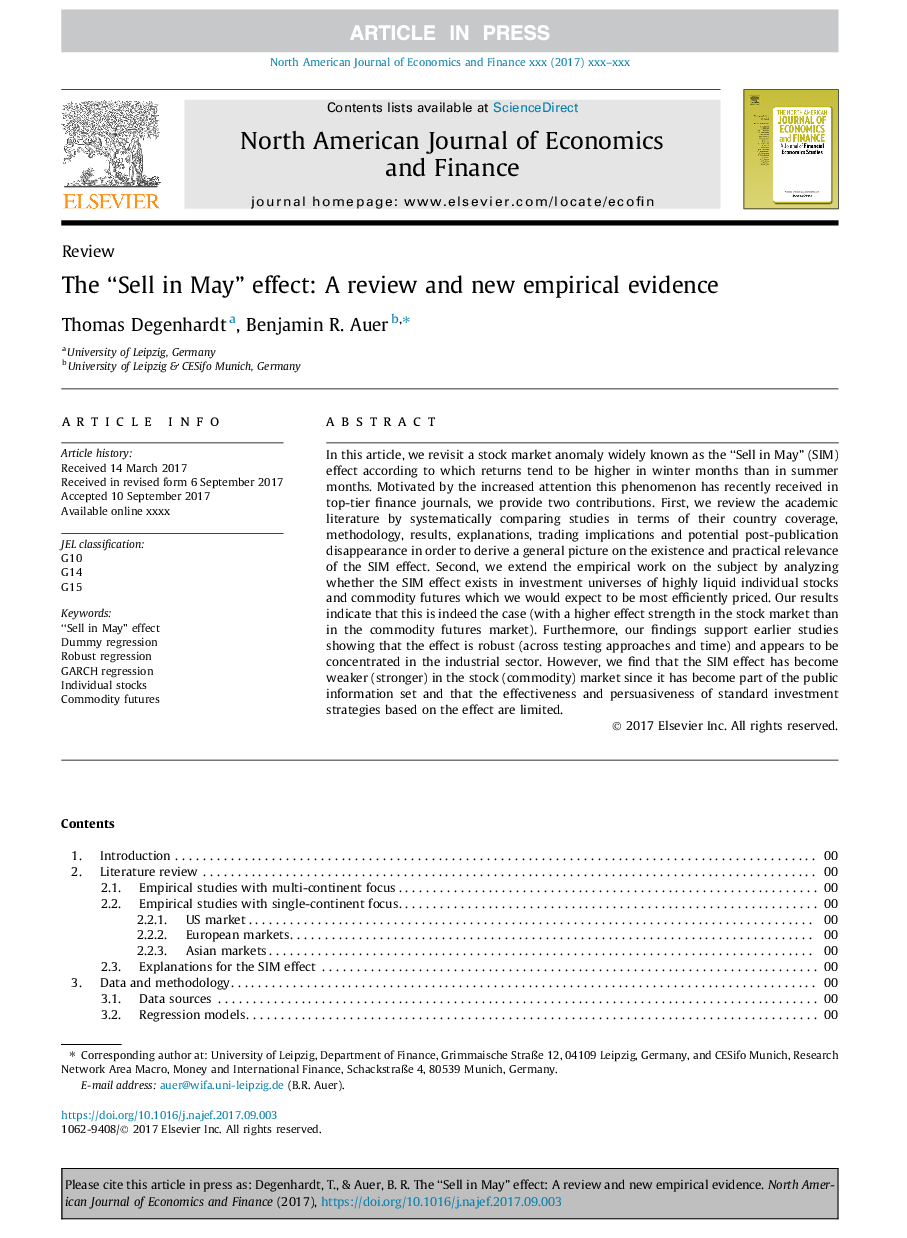| Article ID | Journal | Published Year | Pages | File Type |
|---|---|---|---|---|
| 7373910 | The North American Journal of Economics and Finance | 2018 | 37 Pages |
Abstract
In this article, we revisit a stock market anomaly widely known as the “Sell in May” (SIM) effect according to which returns tend to be higher in winter months than in summer months. Motivated by the increased attention this phenomenon has recently received in top-tier finance journals, we provide two contributions. First, we review the academic literature by systematically comparing studies in terms of their country coverage, methodology, results, explanations, trading implications and potential post-publication disappearance in order to derive a general picture on the existence and practical relevance of the SIM effect. Second, we extend the empirical work on the subject by analyzing whether the SIM effect exists in investment universes of highly liquid individual stocks and commodity futures which we would expect to be most efficiently priced. Our results indicate that this is indeed the case (with a higher effect strength in the stock market than in the commodity futures market). Furthermore, our findings support earlier studies showing that the effect is robust (across testing approaches and time) and appears to be concentrated in the industrial sector. However, we find that the SIM effect has become weaker (stronger) in the stock (commodity) market since it has become part of the public information set and that the effectiveness and persuasiveness of standard investment strategies based on the effect are limited.
Related Topics
Social Sciences and Humanities
Economics, Econometrics and Finance
Economics and Econometrics
Authors
Thomas Degenhardt, Benjamin R. Auer,
